History of Chito Ryu
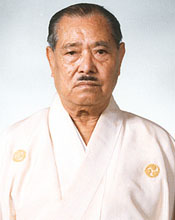
The World Budo Alliance presents the History of Chito Ryu. Chito-ryu is a mix of Shorin-ryu and other Okinawan martial art styles. And the style uses a mix of both hard and soft techniques. However, unlike most other types of Karate, it focuses on soft techniques rather than hard ones.
The stances are always natural and there are a total of 15 kata.
Also Chito Ryu is a combination of the words Chi, To, and Ryu, which means 1000-year-old Chinese style. The art combines medical science with traditional Chinese martial art techniques to form an attacking karate style.
History of Chito Ryu
Therefore the karate technique utilizes muscle’s contraction to generate strength for attacking and self-defense. Shime (しめ) and shibori (絞り are the two signature aspects of this martial art. And Shine (しめ) refers to the contraction of muscles in the legs to enhance stability and strength during stance.
On the other hand, shibori (絞り is the contraction of arms’ muscles that helps in quicker rotational movements when attacking an opponent.
History of Chito Ryu
Very importantly Chito Ryu karate was introduced by a Japanese medical and karate expert Dr. Tsuyoshi Chitose (1898-1984). He learned karate from there before proceeding to mainland Japan for studying medicine. And after learning physiology, Dr. Tsuyoshi combined his knowledge of medicine with karate techniques he learned over the years.
In the early days, Chito Ryu was taught as Kumite and the kata of Seisan and Bassai. However, things changed significantly after world war 2. Dr. Tsuyoshi opened his dojo in Yoseikan, where the techniques evolved significantly.
History of Chito Ryu - Techniques Of Chito Ryu Karate
Therefore Chito Ryu Karate is a martial art that focuses on creating large amounts of power to damage the opponent. All techniques adhere to the bio-mechanics of the human body to prevent any physical harm during the training.
Below are some essential techniques you must know if you are willing to indulge in Chito Ryu Karate.
History of Chito Ryu - Chito Ryu Karate Katas List:
!) Chito-Ryu Kata – Shihohai
2) Chito-Ryu Kata – Seisan
3) Chito-Ryu Kata – Niseishi
4) Chito-Ryu Kata – Bassai
5) Chito-Ryu Kata – Chinto
6) Chito-Ryu Kata – Sochin
7) Chito-Ryu Kata – Rohai Sho
8) Chito-Ryu Kata – Rohai Dai
9) Chito-Ryu Kata – Tenshin
10) Chito-Ryu Kata – Sanshiryu
11) Chito-Ryu Kata – Kusanku
12) Chito-Ryu Kata – Ryusan
13) Chito-Ryu Kata – Sanchin
History of Chito Ryu - Dr. Tsuyoshi Chitose (1898 - 1984) Founder of Chito Ryu Karate
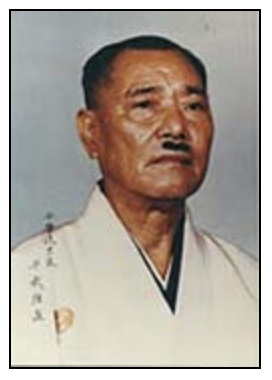
Dr. Tsuyoshi Chitose, also known as Chinen Gua in Okinawa, was the founder of Chito Ryu Karate. Born in Kumochi, Naha City, Okinawa-ken, on October 18th, 1898. Thus Dr. Chitose created Chito Ryu after spending years studying both Shorin-Ryu and Shorei-Ryu. He became the Supreme Instructor, 10th Dan, of Chito-Kai of the All Japan Karate Doh Federation.
Therefore Chito Ryu developed from two disciplines, Shuri no Te (now known as Shorin-Ryu) and Naha no Te (now known as Shorei-Ryu). O-Sensei created Chito Ryu by combining the merits of each with his medical knowledge to come up with a more healthy alternative.
And O-Sensei was introduced into the secrets of Naha no Te by the respected fifth master Mr. Aragaki Ou at the age of seven. At that time Mr. Gichin Funakoshi a pioneer of Karate-do on the mainland was also in Naha as a student.
At Shuri city O-Sensei studied under such masters as: Mr. Choyu Motobu, Mr. Chotoku Kiyan, Mr. Haragusuku Chiyomu, Mr. Kanryo Higaonna.
Who also taught Mr. Chojun Miyagusuku, the founder of Goju-Ryu and Mr. Kenwa Mabuni, the founder of Shito-Ryu.
History of Chito Ryu - Dr. Tsuyoshi Chitose
Thus in 1922 O-Sensei went to Tokyo to study medicine, while there he assisted in the opening of Mr. Funakoshi's SHOTO-KAI YOTSUYA dojo. He instructed in kumite and the kata of SEISAN and BASSAI.
After World War II, in March 1946, O-Sensei opened a karate dojo called Yoseikan in Naka Machi, Kikuchi-gun, Kumamoto-ken. Important to note in 1958 O-Sensei attained the the rank of Juudan from ZEN OKINAWA KARATE KOBUDO RENGO KAI (The all Okinawa Karate and Weaponry association).
And in 1975 he moved his dojo which was known as the SOHONBU (General headquarters) to Tsuboi, Kumamoto City, where it presently exists. Also at O-Sensei's death in 1984, his son Yasuhiro Chitose assumed the name of his father , Tsuyoshi Chitose and took on the responsibilities as new Soke.
History of Chito Ryu
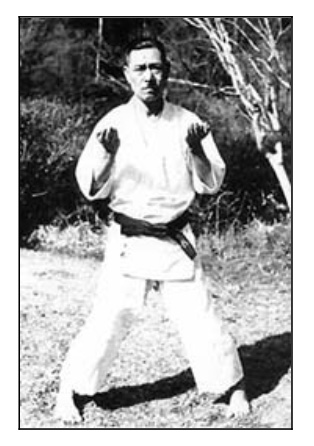
The History of Chito Ryu karate begins with our founder, Tsuyoshi Chitose (1898-1984). He was born in the Kumochi area of Naha City on the island of Okinawa on October 18, 1898.
And it was the 29th year of the Meiji era in Japan. Here on this small island, known as the cradle of karate-do, Tsuyoshi Chitose grew up and spent his early formative years.
Very importantly his original birth name was Chinen (Gochoku) Masuo. And his father Chinen (Masuo) Chiyoyu, married into his wife's last name, and was not a practitioner of karate. Chitose Sensei changed his name to Tsuyoshi Chitose for personal reasons after he moved to Tokyo in 1922 to attend medical college.
In tracing the History of Chito Ryu, we must also look into the historical influences that shaped Chitose Sensei's martial arts experiences and impacted the art of today.
Therefore old karate and martial arts teachers were responsible for influencing future generations of karate practitioners with the ideas they developed during their lifetimes. Some of these ideas were passed to Doctor Chitose and aided him in his creation of Chito-ryu.
History of Chito Ryu continues
Chitose Sensei's mother's grandfather was a very famous karate master. His name was Sokon (Bushi) Matsumura (1797-1889). Matsumura Sensei was considered one of the great karate (Tode) figures of the nineteenth century.
And Matsumura Sensei started his karate training when he was thirteen years old. His father, Sofuku Matsumura, took him to see a seventy eight year old karate teacher named Tode (Karate) Sakugawa. Sakugawa Sensei (1733-1815). He was born in Akata Cho, a small section of the city of Shuri, Okinawa.
When Sakugawa was a young man he had been a student of Takahara Peichin (1683 - 1760). And he had also studied for six years (1756 to 1762) with a Chinese military envoy (Kusanku). It is from this part of our history that we get the kata - Seisan, Niseishi, Sochin, Sakugawa No Kon Sho, and Kusanku.
History of Chito Ryu
Therefore years later Bushi Matsumura had an opportunity to train with a Chinese trader named Chinto. When Chinto returned to China, Matsumura Sensei developed a kata from the many movements he had learned and named it Chinto in his teacher's honor. This kata is presently required for Sho-Dan (1st degree black belt) by the U. S. Chito-ryu Karate Federation.
In 1886 Jigoro Kano, the founder of Judo, established the kyu/dan belt system. And in 1907 he designed the Judo uniform from which the karate uniform is taken, except that the karate jacket is much lighter in weight.
Also in 1895 the Japanese government created the DAI NIPPON BUTOKUKAI to oversee the martial arts, and provided two titles - HANSHI, the highest award, and KYOSHI. Thus in 1934 the DAI NIPPON BUTOKUKAI created a third title, RENSHI, which was below that of Kyoshi.
History of Chito Ryu continues
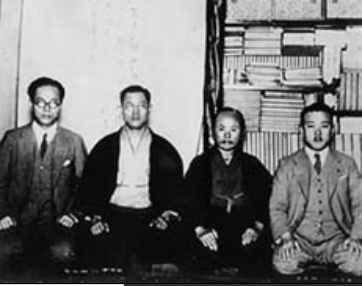
And on April 12, 1924 Gichin Funakoshi became the first karate teacher to award black belts when he adopted Jigoro Kano's practice of awarding this rank to advanced students. Experiments in kumite training were initiated between 1924 and 1927 at Tokyo University.
By 1927 these students were practicing tournament type sparring. All these elements played major roles in the development of Chito-ryu.
Thus Chitose Sensei started his Tode (karate) training when he was seven years old (1905). His first teacher was a sixty year old man by the name of Unchu (Nigaki) Kamade Arakaki (1840-1920). Arakaki Sensei taught the young Chitose his first kata - Seisan.
The method of teaching karate in those days was to teach kata. The practice of basics and kumite, which is common today, was unknown. And in the olden days many karate teachers refused to have or claim a style. They said that they just taught karate (Tode), style or ryu was never an issue. And for years the young Chitose practiced the one kata, Seisan. Only after he reached the age of fourteen did Arakaki Sensei teach him his second kata.
When young Tsuyoshi Chitose entered high school he had the opportunity of further training with Sensei Anko Itosu (1832-1916). Itosu was born in Yamagawa Village, Shuri, and was a student of Sokon Matsumura. Therefore itt is believed Itosu Sensei developed the Chinese corkscrew punch into its present form. And also originated the Pinan (Heian) kata. In April, 1901.
History of Chito Ryu continues
Itosu Sensei introduced karate training to the Shuri Jinjo Elementary School as part of the physical fitness training. During 1905 he introduced karate training into the Prefectural Teachers Training College. Three years later, under his guidance, karate training was introduced into all Okinawan schools.
One of Chitose Sensei's young school friends was Shoshin Nagamine, who would one day found the Matsubayashi Shorin-ryu style of karate, and become president of the Okinawan Karate Federation. One of their school teachers, later recognized as the greatest karate master of the twentieth century, was Gichin Funakoshi (1868-1957), the father of modern karate and founder of Shotokan. Another of Chitose Sensei's classmates was Funakoshi Sensei's son, Gikko (Yoshitaka) Funakoshi.
History of Chito Ryu
From 1922-1932 Chitose Sensei went to college, practiced karate in his spare time. And assisted his old school teacher Gichin Funakoshi with his college karate classes. In 1931 Chitose Sensei assisted a new student at the Takushoku University karate club.
His name was Masatoshi Nakayama (1913-1986), who would one day be the head instructor of the Japan Karate Association (Shotokan). Thus during this time Dr. Chitose also established his medical practice. During the war he served in the Army Medical Corps and spent some time in China. And while serving in a small village in China Dr. Chitose befriended the local citizens. As a result of his assistance to the local population, he came into contact and was trained by an old Chinese Gung-fu teacher.
History of Chito Ryu - O-Sensei
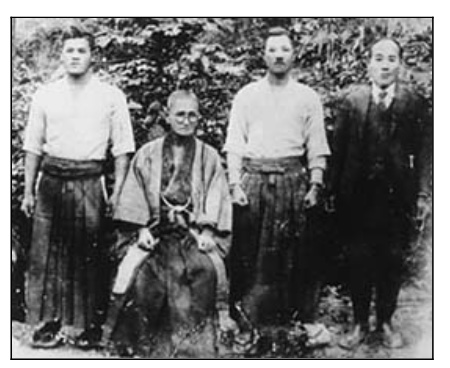
In 1936 O-Sensei was present at a meeting of Okinawan karate authorities in Naha, Okinawa. This was the meeting in which the translation "Empty Hand Way" was actually adopted for Karate-do in place of the original todejutsu or "Chinese Hand Method".
And in March 1946 Doctor Chitose opened a small karate dojo Yoseikan (training hall) in Machi, Kirkuchi-Gun, Kumamoto Prefecture. Thus he later held an Okinawan Kobudo Taikai (Tournament) at the Kubukiza in Kumamoto City to help raise relief funds for Okinawa.
In 1948, O-Sensei organized the All Japan Karate-do Federation (Zen Nihon Karate-do Renmei) along with Gichin Funakoshi, Mabuni, Higa Seko, and Toyama Kanken.
And served as president for some time. It was around this time that O-Sensei named his style Chito-ryu. Although it may seem obvious that "Chito" is a derivation of Chitose, this in fact is not the case. "Chi" is derived from "thousand" and "to" is from the Chinese "Tang", hence the translation of Chito-ryu is "The thousand year old Chinese (Tang dynasty) way", signifying the ultimate origin of Karate as being from China during the Tang era roughly one thousand years ago.
I hope you enjoyed the History of Chito Ryu.
History of Chito Ryu - Researched by Sensei Kara Borshuk
History of Chito Ryu - Edited by Grand Master Art Mason